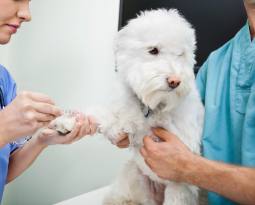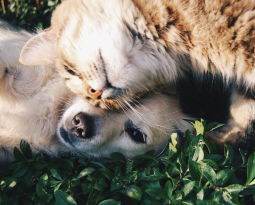If your dog is particularly vocal, you might find yourself wondering why they “talk” so much. Dogs use a variety of sounds to communicate, and understanding these vocalizations can help you better interpret your pet’s needs and emotions. Here, we’ll explore the reasons behind your dog’s chatter and what each type of vocalization means.
Types of Vocalizations
1. Barking
2. Whining
3. Howling
4. Growling
5. Whimpering
Reasons for Barking
1. Attention-Seeking: Dogs often bark to get your attention. Whether they want to play, need to go outside, or are simply bored, barking is their way of saying, “Look at me!”
2. Alarm or Alert: Barking can be a way for dogs to alert you to potential dangers or unfamiliar situations. They might bark at strangers, other animals, or unusual noises.
3. Excitement: Dogs bark when they’re excited, such as when you come home, during playtime, or when they see something they like.
4. Territorial Behavior: Barking is a way for dogs to protect their territory. They might bark to warn others to stay away from their home or yard.
5. Fear or Anxiety: Dogs may bark when they are scared or anxious. This can include barking during thunderstorms, fireworks, or when left alone.
Reasons for Whining
1. Seeking Attention: Similar to barking, dogs may whine to get your attention or express a need, such as wanting food, water, or to go outside.
2. Anxiety or Stress: Whining can be a sign of anxiety or stress. If your dog whines frequently, it might be worth exploring potential stressors in their environment.
3. Pain or Discomfort: Dogs may whine if they are in pain or feeling unwell. If whining is accompanied by other signs of illness, consult your veterinarian.
Reasons for Howling
1. Communication: Howling is a form of long-distance communication for dogs. It’s more common in breeds like Huskies and Beagles and can be a response to hearing other dogs or high-pitched sounds.
2. Attention-Seeking: Some dogs howl to get attention, especially if they learn that howling gets a response from their owner.
Reasons for Growling
1. Warning: Growling is often a warning sign. It can indicate that your dog feels threatened or uncomfortable and is telling others to back off.
2. Play: Some dogs growl during play, especially during roughhousing. This type of growling is usually accompanied by relaxed body language and is not a cause for concern.
3. Pain: Growling can also be a sign of pain. If your dog growls when touched or moved, it’s important to check for injuries or consult a vet.
Reasons for Whimpering
1. Fear or Anxiety: Whimpering is often a sign of fear or anxiety. Dogs may whimper during stressful situations or when they feel insecure.
2. Seeking Comfort: Dogs may whimper when seeking comfort from their owners, especially if they are feeling unwell or scared.
How to Manage Excessive Vocalization
1. Identify the Cause: Understanding why your dog is vocalizing is the first step in managing the behavior. Pay attention to the context and triggers.
2. Training: Consistent training can help reduce excessive barking or whining. Teaching commands like “quiet” and rewarding calm behavior can be effective.
3. Mental and Physical Stimulation: Ensure your dog gets plenty of exercise and mental stimulation. Boredom can lead to increased vocalization.
4. Comfort and Security: Provide a safe and comfortable environment for your dog. If anxiety is a factor, consider using calming aids or consulting a professional trainer.
Understanding your dog’s vocalizations can help you better meet their needs and foster a stronger bond. If excessive vocalization is a concern, our team at Acoma Animal Clinic Tucson is here to help. We can provide guidance on behavior management and ensure there are no underlying health issues contributing to your dog’s chatter. Schedule an appointment today to discuss your dog’s behavior and health with our expert team.







